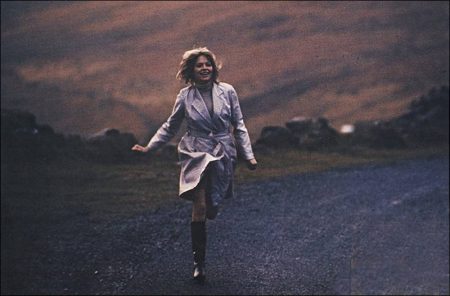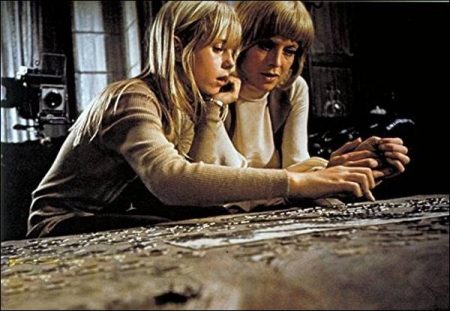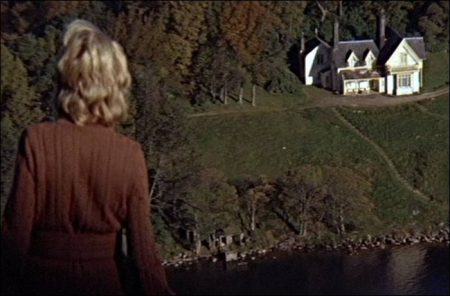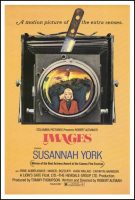Images movie storyline. The title of the film appears onscreen as Robert Altman’s images , with the word “images” in lower case. Altman’s onscreen credit reads: “Written and directed by.” Excerpts from the 1973 book ‘in search of unicorns’ a book for children by Susannah York,” are heard intermittently throughout the film, recited in voice-over narration by York, who portrayed “Cathryn.”
In the film’s final scene, during which “Susannah,” who is portrayed by Cathryn Harrison, completes the jigsaw puzzle, Harrison’s voice is heard reciting the final passage from the book. The excerpts from In search of unicorns broadly parallel the action of the film. Although York wrote the book while images was in production, it was a personal project unrelated to the film.
Throughout the film, the character “Hugh,” who is portrayed by Rene Auberjonois, makes banal jokes, many reflecting the film’s themes of schizophrenia and duality, such as his nonsensical question, “What is the difference between a rabbit?” (The answer: “Nothing. One is both the same.”) In depicting Cathryn’s schizophrenia, the film remains ambiguous about whether a character appearing in a scene is “real” or part of Cathryn’s hallucination. Nor is it entirely certain that the person is doing what Cathryn imagines, as in the case of Marcel’s sexual overtures. Windchimes and other exotic sound effects, which are performed in the soundtrack by Stomu Yamash’ta, precede sequences depicting the hallucinations.
Visual images appearing repeatedly throughout the film include mirrors, cameras, camera lenses, binoculars, eyeglasses, mobiles and various windchimes. As noted by several reviewers, writer-director Altman gave the five main characters in the story the same first names as the lead actors, although no actor portrays a character with his or her own name.
images is one of two scripts that Altman wrote without a co-author, the second being his 1977 production 3 Women . According to a Nov 1972 Andy Warhol’s Interview article and a modern biography, Altman based the film on a poem about mirrors he wrote as a child. Modern sources note that Altman worked on the script for five years and made eight revisions, and that the addition of York’s children’s book as narration was added after the actress was cast.
Filmfacts reported that Altman raised $807,000 from independent sources to produce the film after “every major studio” declined to subsidize it. According to an Oct 1968 DV news item, Factor-Altman-Mirell Films Ltd. planned to produce the film, but in a Jul 1969 DV news item, Don Factor alone was announced as producer of images . A 10 Dec 1969 Var news item reported that Factor and Jimmy Lyndon would produce the film. The film ultimately was produced by Lion’s Gate Films, a company founded by Altman, and the British-based Hemdale Group.
According to a 10 Dec 1969 Var news item, Altman planned to shoot in Vancouver, Canada (where he had recently completed the Factor-Altman-Mirell 1969 film That Cold Day in the Park ), at locations in Long Beach, Fisherman’s Cove and along the Vancouver coast. However, as noted in Filmfacts , the film was shot at the Ardmore Studios, in and around Dublin and Loch Bray, Ireland. Although an Apr 1968 DV news item reported that Natalie Wood was cast and the Dec 1969 Var news item listed Marianne McAndrews, John Vernon and Michael Murphy in the cast, none of the actors appear in the final film. A modern source adds Barbara Baxley as the voice on the telephone.
According to Jul 1972 DV and Var news items, images was rejected by Cinema 5’s Don Rugoff and United Artists’ David Picker, before Columbia acquired the film for distribution. The Jul 1972 DV news item reported rumors that Altman, who had retained some control over marketing and publicity and preferred a fall release, was at odds with Columbia, which wanted an Aug 1972 “key city” opening. According to an Apr 1972 Box article, the film was the first Irish feature to be screened the Cannes Film Festival, where, a Jul 1972 DV news item noted, York won the Best Actress award. The film also was screened at the Edinburgh and Cork Film Festivals. For his contribution to images , John Williams was nominated for an Academy Award for Music–Best Original Dramatic Score.
Images is a 1972 psychological horror film written and directed by Robert Altman and starring Susannah York and René Auberjonois. The picture follows an unstable children’s author who finds herself engulfed in apparitions and hallucinations while staying at her remote vacation home.
Conceived by Altman in the mid-1960s, Images secured financing in 1971 by Hemdale Film Group Ltd., and shot on location in County Wicklow, Ireland in the fall of that year. The script, which had been sparsely composed by Altman, was collaboratively developed further throughout the shoot with the actors. Images premiered at the 25th Cannes Film Festival, where York won the award for Best Actress, after which it was released theatrically in the United States by Columbia Pictures on December 18, 1972. Its theatrical run in the United States was short-lived, and the film received little promotion from Hemdale in the United Kingdom.
Critical reception of the film was mixed, with some critics praising York’s performance and Vilmos Zsigmond’s cinematography, while others faulted it for being incoherent, comparing it to films like Repulsion (1965). The film was nominated for a Golden Globe Award for Best English-Language Foreign Film, and John Williams was nominated for an Academy Award for Best Original Score.
Images (1972)
Directed by: Robert Altman
Starring: Susannah York, René Auberjonois, Marcel Bozzuffi, Cathryn Harrison, Hugh Millais, John Morley, Barbara Baxley
Screenplay by: Robert Altman, Susannah York
Production Design by: Leon Ericksen
Cinematography by: Vilmos Zsigmond
Film Editing by: Graeme Clifford
Makeup Department: Toni Delaney, Barry Richardson
Music by: John Williams
MPAA Rating: None.
Distributed by: Columbia Pictures
Release Date: December 18, 1972
Views: 199




